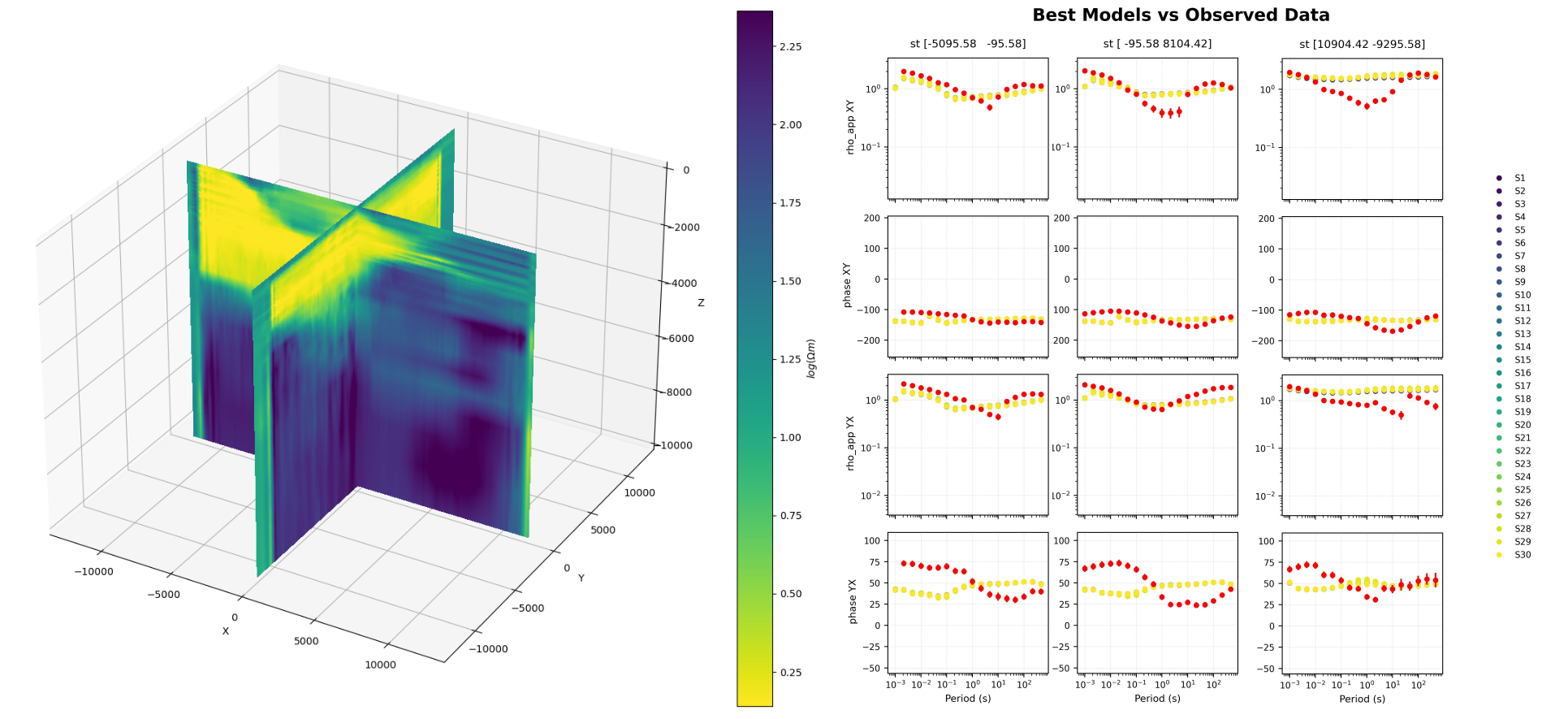Product
We are developing a SaaS web platform that delivers flexible and reliable 3‑D magnetotelluric (MT) models by combining deep‑learning frameworks with Bayesian inference. Our solution reduces computing time and costs while providing geologically plausible results.
Development status
Our technology is currently at TRL 5 (validated in a relevant environment), meaning that the components work together in a prototype that reflects real‑world operating conditions.
Our current tests with the dataset of Díaz et al. (2015) demonstrate that our approach can be applied to a high‑dimensional inversion of > 1 million parameters, covering 30 stations and 18 periods for the XY and YX components. The inversion converges in just 20 hours of computation on an AMD Ryzen 9 9950X (16 cores), 64 GB RAM, and an NVIDIA GeForce RTX 4090.
The recovered model (shown below as two orthogonal profiles, EW and NS) exhibits reasonable agreement between predictions and observations, indicating that the development is progressing correctly. The main geophysical features are consistent with the published model:

- Resistivity values span a comparable range of roughly 1 – 1000 Ω·m and increase toward the east.
- High‑conductivity bodies extend to depths of up to 4 km and are predominantly oriented N‑NE.
Current Work
Our present effort focuses on expanding the exploration of the solution space for the inverse problem. At present, the inversion process tends to collapse into a single electrical‑resistivity configuration. This acts as an implicit regularization that captures only first‑order subsurface structures, leaving local heterogeneities unrecovered. Consequently, the final output is an averaged model that reflects the overall trend rather than fine‑scale geological detail.
By addressing this point, we aim to move beyond averaged representations and deliver inversion results that retain both the large‑scale trends and the subtle, geologically significant variations essential for accurate interpretation.
Future work will focus on improving the sampling strategy to better capture multi‑modal posterior distributions and recover finer heterogeneities.